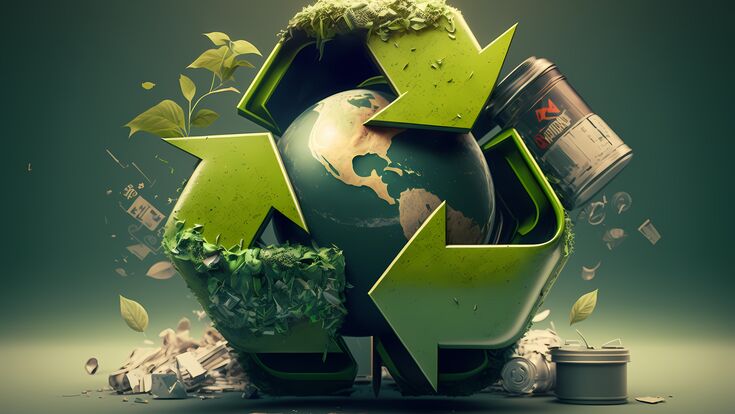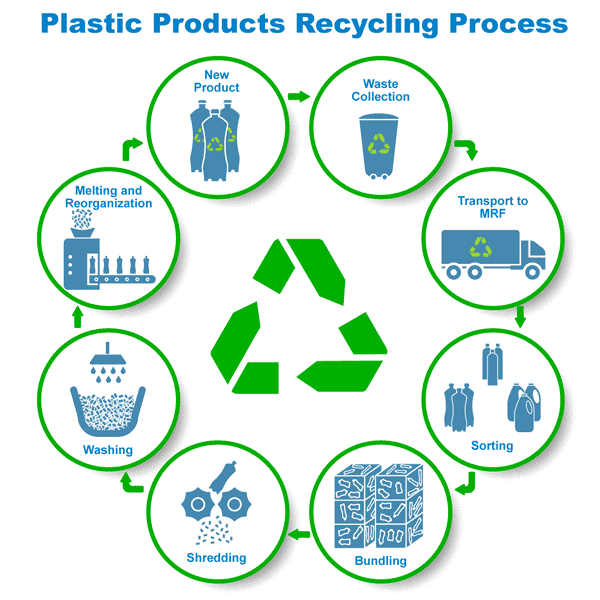The Influence of Recycling Lives Services on Communities and the Environment
The Influence of Recycling Lives Services on Communities and the Environment
Blog Article
Understanding the Classification and Handling of Numerous Types of Waste
Efficient waste monitoring is critical for ecological sustainability, requiring a thorough understanding of the classification and handling of different waste types. Household waste, commercial spin-offs, hazardous materials, digital refuse, and natural residues each require distinctive methods to guarantee security and minimize environmental damages. Carrying out right partition, therapy, and disposal techniques is vital to minimize unfavorable environmental impacts and promote source preservation. As an example, the composting of natural waste contrasts dramatically with the detailed treatments needed to manage harmful compounds. This multifaceted technique to waste monitoring highlights its intricacy and the essential requirement for specialized expertise in this domain.

Family Waste
Family waste, including a broad array of discarded products created from day-to-day living activities, represents a considerable element of the general waste stream - recycling lives services. This category includes organic waste such as food scraps, backyard trimmings, and paper products, together with inorganic materials like plastics, metals, and glass. The diverse nature of family waste demands efficient category and management to minimize environmental impact and advertise lasting living techniques
Reliable family waste management starts with segregation at the resource, facilitating recycling, composting, and secure disposal. Organic waste, for instance, can be composted to produce nutrient-rich dirt changes, reducing land fill problem and enhancing dirt health and wellness. Recyclable materials, consisting of paper, glass, and certain plastics, can be refined and repurposed, reducing and preserving resources power usage associated with brand-new product production.
Moreover, unsafe household waste such as batteries, digital devices, and cleansing chemicals requires specialized handling to avoid soil and water contamination. Public recognition campaigns and hassle-free disposal choices play important roles in ensuring correct disposal and recycling of these materials. By applying durable waste decrease methods and fostering neighborhood participation, communities can substantially reduce the environmental footprint of house waste.
Hazardous Waste
Industrial waste, a major factor to global waste generation, incorporates a varied array of products created by manufacturing, construction, and other industrial activities. This group includes by-products such as scrap metal, plastics, rubber, chemicals, and various other residues. The structure and volume of hazardous waste can vary considerably depending upon the industry and manufacturing processes entailed. Effective monitoring of hazardous waste is crucial for minimizing environmental influence and promoting lasting practices.
The handling of commercial waste commonly includes numerous procedures: collection, segregation, treatment, and disposal. Collection systems are developed to efficiently collect waste materials from various resources within a commercial procedure. Segregation is crucial, as it ensures recyclable products are divided from non-recyclable ones, which can be directed towards appropriate recycling or disposal networks. Therapy procedures, consisting of physical, chemical, and organic techniques, are used to lower the poisoning, quantity, and ecological effect of the waste. Lastly, disposal methods like landfilling or incineration are used for waste that can not be reused or treated.
Embracing approaches such as waste reduction, source healing, and recycling can considerably reduce the problem of commercial waste on the pop over here atmosphere, adding to more lasting commercial methods.
Contaminated Materials

The category of contaminated materials is generally based on its chemical and physical attributes. Hazardous wastes consist of dangerous compounds that can trigger damaging health and wellness impacts even at low concentrations. Corrosive wastes can harm or destroy living cells and materials. Flammable wastes can conveniently spark, posing fire threats, while reactive wastes can cause explosions or launch hazardous gases upon contact with various other substances.
Efficient contaminated materials monitoring involves numerous key methods: identification and partition of hazardous products, safe transport and storage space, and suitable treatment and disposal. Therapy techniques may consist of chemical incineration, stablizing, and neutralization. Governing conformity is crucial, assisted by structures such as the Resource Conservation and Healing Act (RCRA) in the United States, which makes certain eco audio and secure monitoring of unsafe waste.
Digital Waste
Digital waste, often abbreviated as e-waste, stands for an expanding difficulty in waste administration because of the fast obsolescence of innovation. This classification includes a broad variety of disposed of electronic devices, consisting of smart devices, computers, televisions, and family devices. The intricacy of e-waste depends on its structure; these items consist of a mix of valuable products such as gold and copper, as well as unsafe substances like lead, mercury, and cadmium.

Regulations and regulations, such as the European Union's Waste Electric and Electronic Tools (WEEE) Directive, aim to advertise responsible e-waste monitoring. These policies mandate suppliers to assist in the collection and recycling of electronic products, consequently minimizing the burden on garbage dumps and minimizing environmental contamination.
Organic Waste
Organic waste, incorporating naturally degradable products such as food scraps, yard trimmings, and farming residues, makes up a substantial portion of the local strong waste stream. This type of waste is significant not just for its volume however additionally for its potential environmental influence if not handled properly. Organic waste can decay anaerobically in landfills, creating methane, a powerful greenhouse gas adding to environment adjustment.
Proper handling of organic waste includes a number of techniques. Additionally, diverting food waste from landfills via contribution programs can relieve food instability while decreasing waste.
Municipalities and organizations are significantly recognizing the importance of organic waste management. Implementing extensive organic waste recycling programs not only mitigates ecological influences yet additionally aligns with broader sustainability goals, promoting a round economic climate where sources are continuously recycled and repurposed.
Verdict
Efficient waste monitoring and environmental security demand an extensive understanding of the category and handling of various waste types. Applying suitable techniques for each waste kind guarantees accountable and secure waste management techniques, ultimately contributing to the security of ecological communities and public health.
Effective waste administration is crucial for ecological sustainability, requiring an extensive understanding of the category and handling of numerous waste kinds.Household waste, including a wide selection of discarded materials produced from day-to-day living activities, represents a considerable part of the overall waste stream.Industrial waste, a major contributor to international waste generation, encompasses a diverse variety of products generated by manufacturing, building, and other commercial activities (recycling lives services).Unsafe waste, a critical problem in waste management, comprises materials that posture significant risks to human health and wellness and great post to read the setting due to their toxic, corrosive, combustible, or responsive buildings.Organic waste, incorporating eco-friendly products such as food scraps, lawn trimmings, and agricultural residues, comprises a substantial section of the metropolitan strong waste stream
Report this page